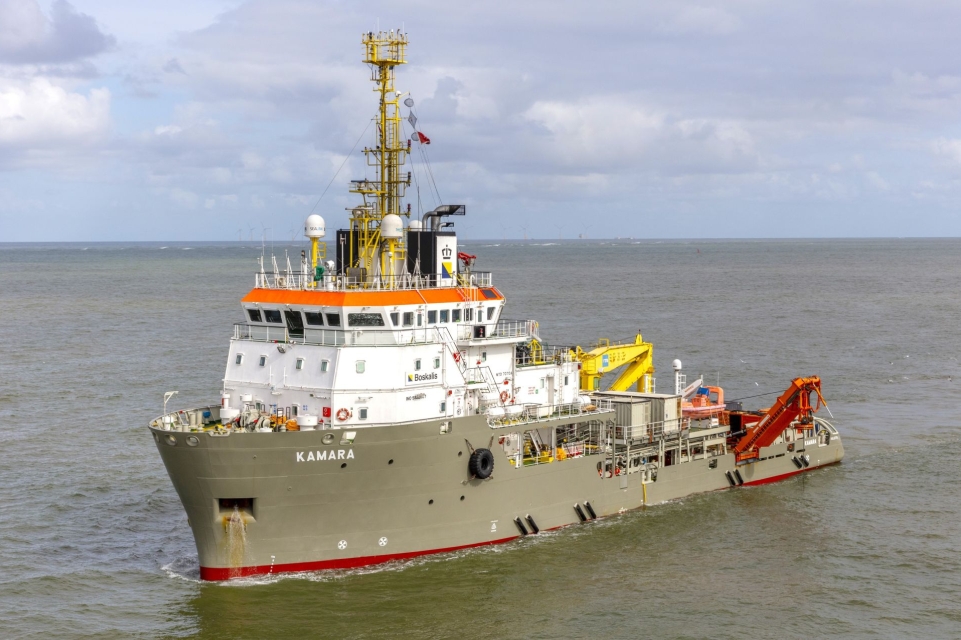An often underestimated and almost invisible – but certainly no less important – aspect of offshore wind farm development is the search for and the thorough investigation of unexploded ordnance: UXO. Boskalis explains how the company deals with this particular challenge.
Particularly during World War II, thousands of bombs, mines and other ordnances were deployed in the North Sea and Baltic Sea, but failed to detonate. These decades-old explosives pose a threat in offshore wind farm development.
To make sure that there are no UXOs at the projected wind farm sites and on the kilometers of cable routes, extensive UXO surveys are vital. With the Kamara, Boskalis has a dedicated vessel with which potential UXOs can be traced, investigated and – if necessary – dismantled.

Also read: Steel cut for Boskalis’ new 31,000 m3 dredger
25 UXOs recovered
Recently, the Kamara did just that for an offshore wind farm development in the Baltic Sea. Together with another vessel and using a Remotely Operated Vehicle and divers, 773 targets were examined on the future cable route.

Most were found to be harmless, but 25 UXOs have been safely recovered to deck and handed over to the German authorities for onshore destruction. One particular UXO – an anti-submarine missile – proved so unsafe that it needed to be detonated at sea as the last remaining option.
The demolition was carried out in compliance with the strict environmental requirements that apply in German waters. Among other things, the deployment of a double bubble curtain and extensive noise reduction and monitoring measures minimised disruption to marine life during detonation.
Pictures by Boskalis.
Also read: Boskalis transports DolWin Epsilon platform








